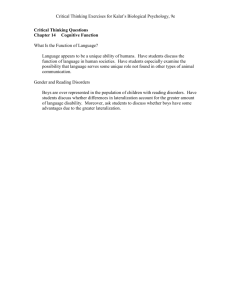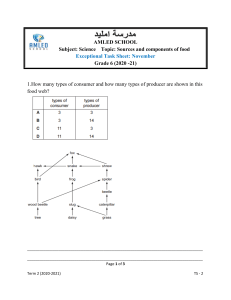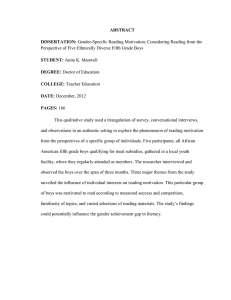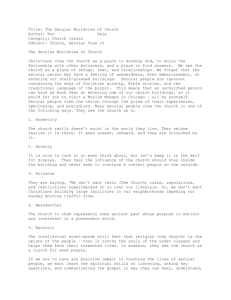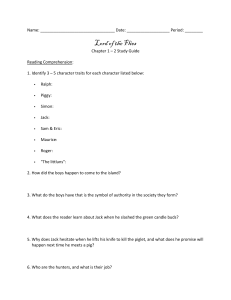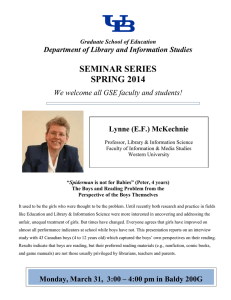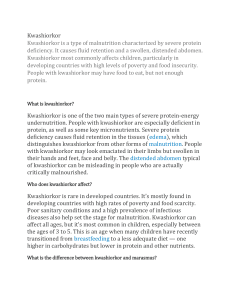Developmental Psychology Chapter Objectives Chapter 6 • Students
advertisement
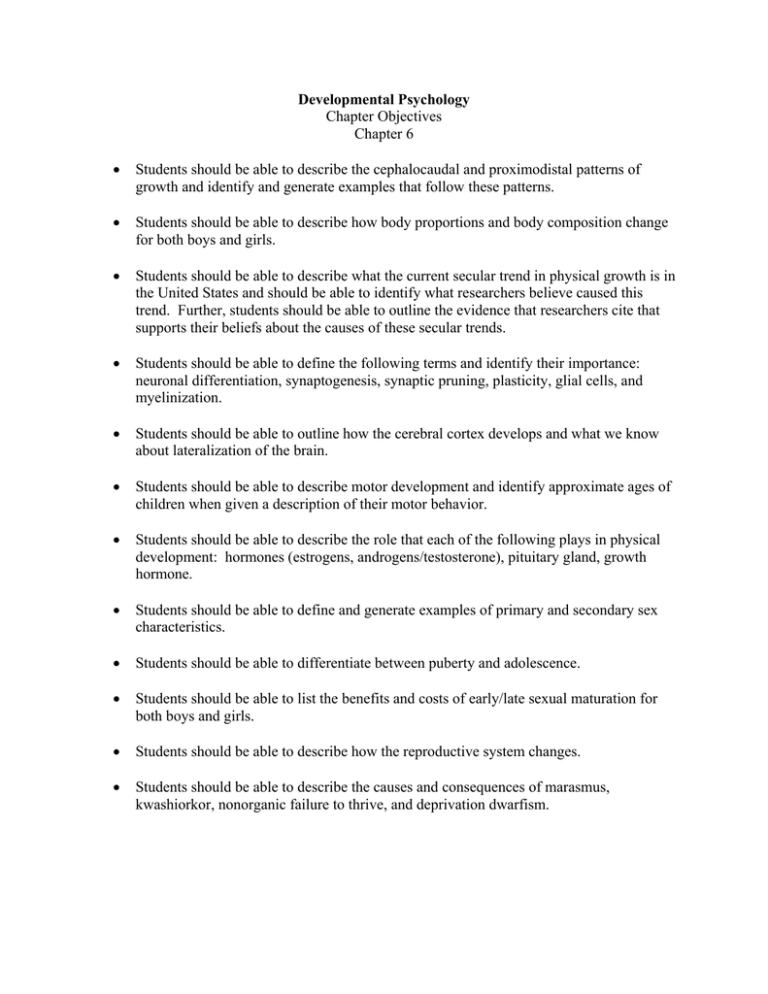
Developmental Psychology Chapter Objectives Chapter 6 • Students should be able to describe the cephalocaudal and proximodistal patterns of growth and identify and generate examples that follow these patterns. • Students should be able to describe how body proportions and body composition change for both boys and girls. • Students should be able to describe what the current secular trend in physical growth is in the United States and should be able to identify what researchers believe caused this trend. Further, students should be able to outline the evidence that researchers cite that supports their beliefs about the causes of these secular trends. • Students should be able to define the following terms and identify their importance: neuronal differentiation, synaptogenesis, synaptic pruning, plasticity, glial cells, and myelinization. • Students should be able to outline how the cerebral cortex develops and what we know about lateralization of the brain. • Students should be able to describe motor development and identify approximate ages of children when given a description of their motor behavior. • Students should be able to describe the role that each of the following plays in physical development: hormones (estrogens, androgens/testosterone), pituitary gland, growth hormone. • Students should be able to define and generate examples of primary and secondary sex characteristics. • Students should be able to differentiate between puberty and adolescence. • Students should be able to list the benefits and costs of early/late sexual maturation for both boys and girls. • Students should be able to describe how the reproductive system changes. • Students should be able to describe the causes and consequences of marasmus, kwashiorkor, nonorganic failure to thrive, and deprivation dwarfism.
